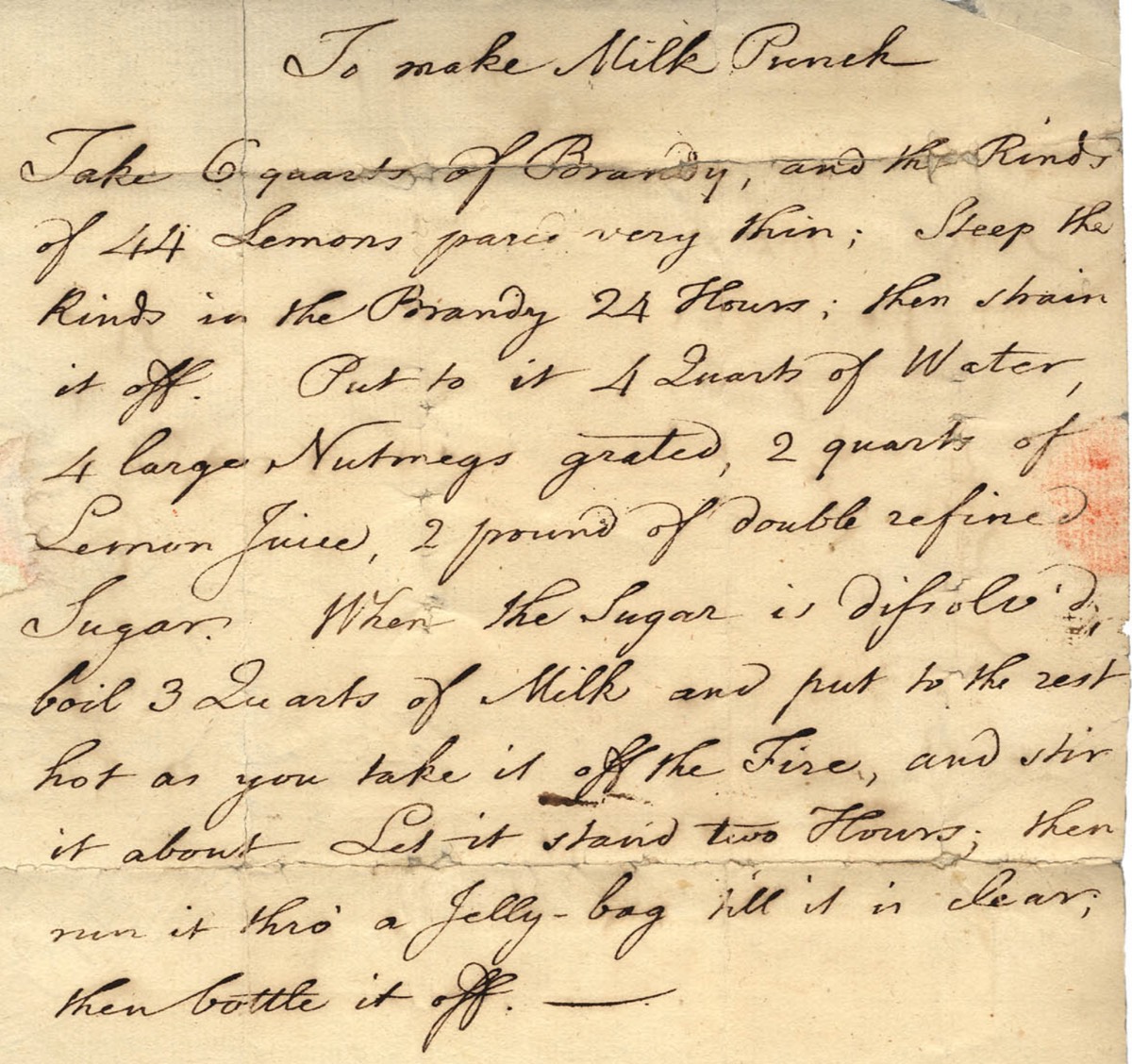It's well-known that Benjamin Franklin was a Founding Father who enjoyed a nice tipple or two (or three). One of his favorite alcoholic beverages was milk punch, a heady concoction of brandy, lemon juice, nutmeg, sugar, water, and hot whole milk—the latter nicely curdled thanks to the heat, lemon juice, and alcohol. It employs a technique known as "milk washing," used to round out and remove harsh, bitter flavors from spirits that have been less than perfectly distilled, as well as preventing drinks from spoiling (a considerable benefit in the 1700s).
Some versions of milk punch also incorporate tea, and in the mixed drink taxonomy, it falls somewhere between a posset and syllabub. The American Chemical Society's George Zaidan decided to delve a bit deeper into the chemistry behind milk washing in a new Reactions video after tasting the difference between a Tea Time cocktail made with the milk washing method and one made without it. The latter was so astringent, it was "like drinking a cup of tea that's been brewed for 6,000 years," per Zaidan. In the process, he ended up stumbling onto a flavorful new twist on the classic espresso martini (although martini purists probably wouldn't consider either to be a true martini).
There isn't anything in the scientific literature about milk washing as it specifically pertains to cocktails, so Zaidan broke the process down into three simple experiments, armed with all the necessary ingredients and his trusty centrifuge. First, he combined whole milk with Coke, a highly acidic beverage that curdles the milk. Per Zaidan, this happens because of the casein proteins in milk, which typically have an overall negative charge that keeps them from clumping. Adding the acid (Coke) adds protons to the mix so that it is electrically neutral (usually at a pH of 4.6).
At that point, the caseins clump together to form solid fatty curds surrounded by a watery liquid. That liquid is significantly lighter than the original Coke because the curds absorbed all the molecules that give the beverage its color. "They're particularly good at pulling tannins, which are those astringent bitter mouth-puckering molecules, out of stuff," Zaidan said. The liquid remained sweet, since the curds don't absorb the sugar, but the taste was now more akin to Sprite. The curds didn't taste much like Coke either.

Next, Zaidan conducted an experiment to see whether vodka can absorb the rich fatty flavors of butter and ghee (clarified butter), aka "fat washing," which should be extendable to other fats like bacon and peanut butter. It took 24 hours to accomplish, but both the butter- and ghee-infused vodkas received a thumbs-up during the taste test. According to Zaidan, this demonstrates that milk washing adds buttery flavor and texture to a cocktail in addition to removing flavor (notably bitter compounds) and color.
But what about the whey, the other type of milk protein? Per Zaidan, this makes for a nice secret ingredient to add to a milk washed cocktail, based on his experiment combining whey with vodka. It doesn't seem to have much impact on the vodka's flavor but it adds a pleasant texture and smoother mouth feel as it coats the tongue.
Armed with his three deconstructed components of the milk washing process, Zaidan was ready to create his own twist on a classic cocktail. First, he poured vodka over peanut butter to infuse the fatty flavor into the spirits (fat washing). Then he curdled some milk and added it to espresso to temper the latter's bitter flavors and combined it with the peanut butter-infused vodka. Finally, he added Kahlua, simple syrup, and a bit of whey for extra body and texture.
Voila! You've got a tastier, more complex version (per Zaidan) of an espresso martini. The downside: It's an extremely time-consuming cocktail to make. Perhaps that's why Franklin's original recipe for milk punch was clearly meant to be made in bulk. (The Massachusetts Historical Society's modern interpretation cuts the portions by three-quarters.)
Listing image by YouTube/American Chemical Society



3175x175(CURRENT).thumb.jpg.b05acc060982b36f5891ba728e6d953c.jpg)
Recommended Comments
There are no comments to display.
Join the conversation
You can post now and register later. If you have an account, sign in now to post with your account.
Note: Your post will require moderator approval before it will be visible.